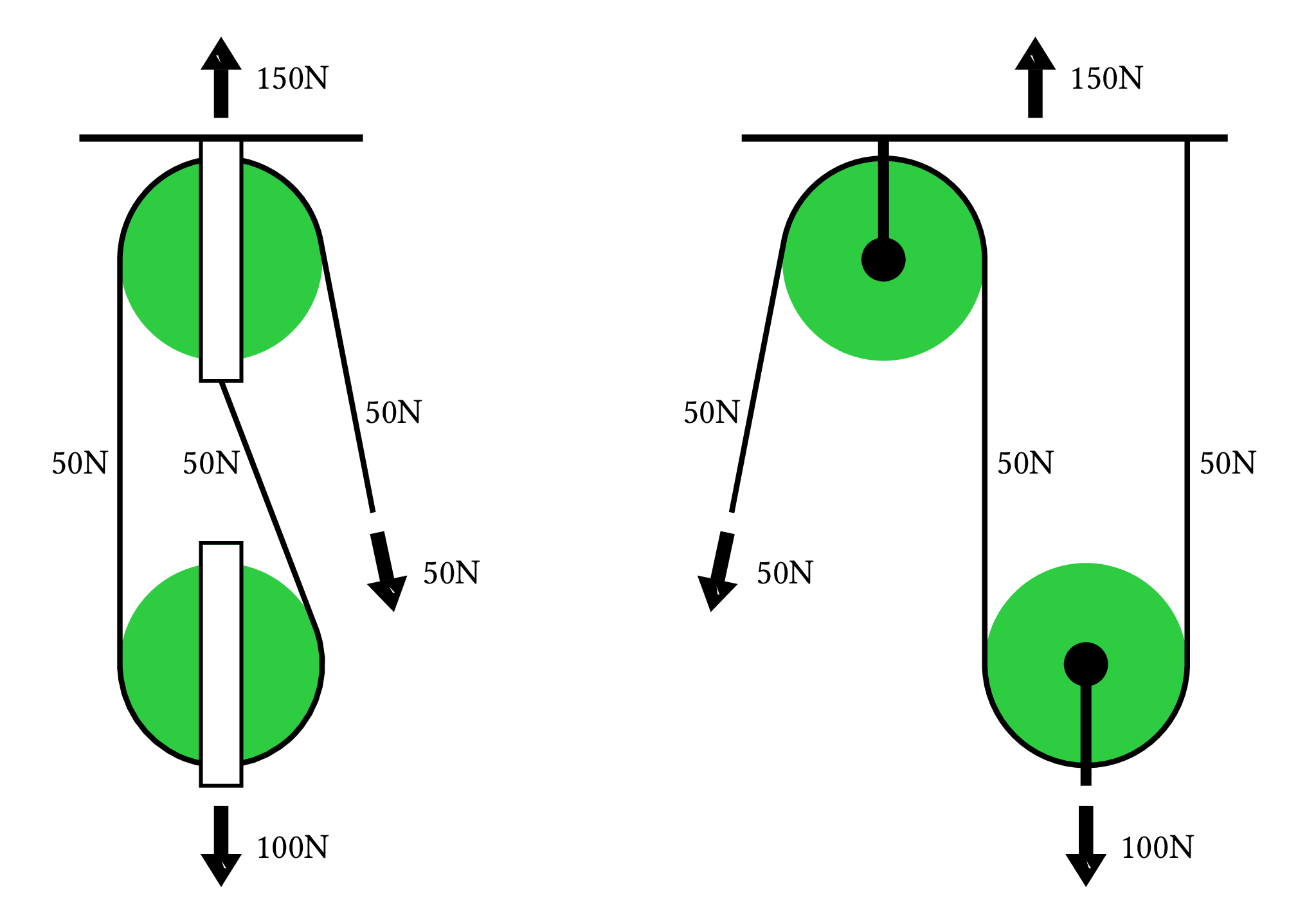Gun Tackle
Creator: Clemens Koza (original)
A gun tackle is a pulley system in which a rope is wound around two pulleys once each. One pulley is fixed, e.g. mounted to a ceiling, while the other connects to the load. As two parts of the rope act on the load, the system gives a mechanical advantage of two. In analyzing a tackle, it can be useful to "separate" the pulleys and mounting points to make the mechanical characteristics stand out. This diagram therefore shows a stylized gun tackle in a typical assembled form and a separated form.

Download
Code
gun-tackle.typ (119 lines)